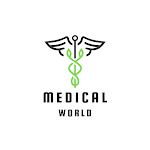Tuberculosis
Introduction
Tuberculosis is a potentially fatal contagious disease that can affect almost any part of the body but is mainly an infection of the lungs. It is derived from two words-
- Tubercle - Round nodules/Swelling
- Osis - condition
Causative organism
- It is caused by the "Mycobacterium tuberculosis" — human
- It is caused by the "mycobacterium Bovis"—— Animals
Other causative organisms
- Mycobacterium africanum
- Mycobacterium microti
Non-Mycobacterium Genus
- Mycobacterium leprae
- Mycobacterium avium
- Mycobacterium asiaticum
Classification
- Pulmonary TB
- Extra pulmonary
Pulmonary TB
They are devided into two terms-
- Primary
- Secondary
Extra pulmonary
- Lymph node TB
- Pleural TB
- TB of upper airways
- Skeletal TB
- Genitourinary tract TB
- Miliary TB
- Pericardial TB
- Gastrointestinal TB
- Tuberculous Meningitis
- Less common forms
Epidemiology
In 2011, there were an estimated 8.7 million incidence cases of TB globally.
Its equivalent to 125 cases in 1,00,000 population.
- Asian - 59%
- African - 26%
- Eastern Mediterranean Region - 7-7%
- The European Region - 4-3%
- Region of the America - 3%
Spread of tuberculosis
- Coughing without covering the mouth
- Crowded places with poor ventilation
- Spitting everywhere
Symptoms
- Persistent cough
- Chest pain
- Coughing with bloody sputum
- Shortness of breath
- Urine discolouration
- Cloudy and reddish urine
- Fever with chills
- Fatigue
Types
pulmonary TB
They are devided into two terms-
Primary Tuberculosis
The infection of an individual who has not been perviously infected or immunised is called primary tuberculosis or childhood tuberculosis.
Lesions forming after infection is peripheral and accompanied by hilar which may not be detectable on chest radiography.
Secondary Tuberculosis
The infection that individual who has been perviously infected or sensitised is called secondary or post primary or chronic tuberculosis.
Extra pulmonary TB
It consists of the following terms-
Lymph node TB-
seen frequently in HIV infected patients.
Symptoms :ainless swelling of lymph nodes most commonly at cervical and Supraclavical.
Systemic system are limited to HIV infected patients.
Pleural TB
Involvement of pleura is common in primary TB and results from penetration of tubercle bacilli into pleural space.
TB of upper airways
Involvement of larynx, pharynx and epiglottis.
SymptomsDysphagia, chronic productive cough
Genitourinary TB
- It is involvement of 15% of all extra pulmonary cases.
- Any part of the genitourinary tract get infected.
SymptomsUrinary frequency, Dysuria, Hematuria.
Skeletal TB
Involvement of weight bearing parts like spine, hip, knee.
Symptoms pain in hip joints, swelling of knees, trauma.
Gastrointestinal TB
It is involvement of any part of Gastrointestinal tract.
SymptomsAbdominal pain, diarrhoea, weight loss
TB Meningitis and Tuberculoma
- 5% of all extra pulmonary TB
- Results from Hematogenous spread of 1 and 2 TB
TB Peicardiatis
- 8% of all extra pulmonary TB cases
- Spreads mainly in mediastinal or hilar nodes or from lungs.
Miliary TB
- Results from hematogenous spread of Tubercle Bacilli
- Spread is due to entry of infection into pulmonary vein producing
- Lesions in different extra pulmonary sites.
Less common Extra Pulmonary TB
- Uveitis
- Panophthalmitis
- painful Hypersensitivity related phlyctenular conjunctivitis.
Diagnosis
Bacteriological test
- Zeihl-Neelsen stain
- Auramine stain
Sputum culture test
- Lowenstein - jensen solid medium: 4-18 weeks
- Liquid medium : 8-14days
- Agar medium : 7-14 days
Radiography
Chest X-rays
Nucleic acid amplification
- Species identification ; several hours
- Low sensitivity, high cost
- Most useful for the rapid confirmation of tuberculosis in persons with AFB-positive sputa
- Utility
- AFB-Negative pulmonary tuberculosis
- Extra pulmonary tuberculosis
Tuberculin skin test
- Injection of fluid into the skin of the lower arm.
- 48-72 hours later- checked for a reaction.
- Diagnosis is based on the size of the wheal.
Other biological examinations
- Cell count
- Protein - Ascites, pleural effusion and meningitis.
Prevention measures
- Mask
- BCG vaccine
- Regular medical follow up
- Isolation of patient
- Ventilation
- Natural sunlight
- Uv germicidal irradiation
Management
It is manage by the drugs, this drugs consists of following terms-
First line drugs
- Isoniazid
- Rifampin
- Rifapentine
- Ethambutol
- Pyrazinamide
Second-line drugs
- Cycloserine
- Ethionamide
- Levofloxacin
- Moxifloxacin
- Capreomycin

0 Comments